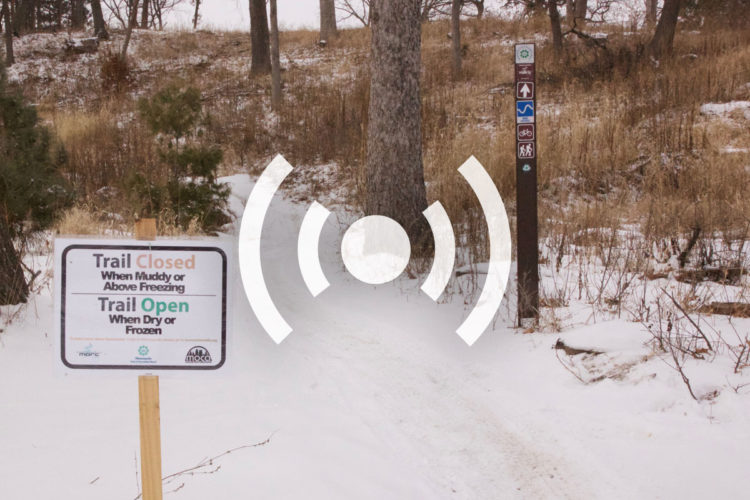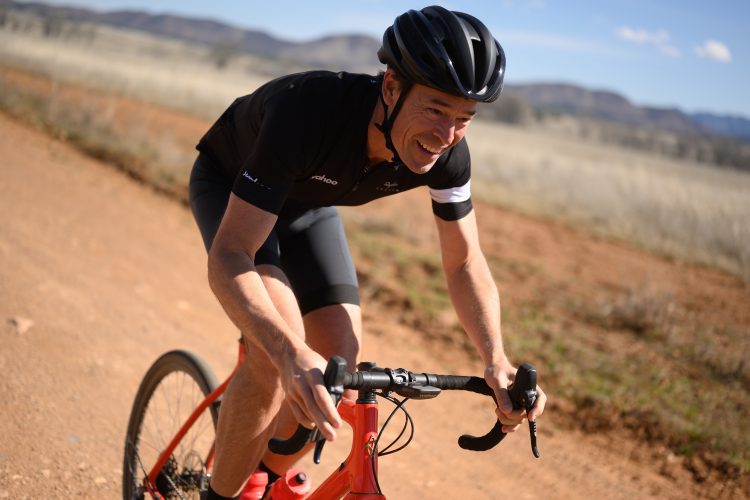
Keep reading Singletracks articles long enough and, come wintertime if you don’t fat bike, suddenly you feel like a 26″ wheel–forgotten like yesterday’s lunch and forever ostracized from mountain biking (or at least until the snow melts). However, despite what you may read, not all of us fat bike, not all of us live where fat biking makes the most sense, and aside from a trusty old trail bike, there are other bikes besides fat bikes for off-season riding. Ya, I know… you can ride a fat bike anywhere all year long, but let’s face it: the mountain bike industry (including Singletracks.com) does fat biking no favor by mostly plugging the fat tire fad during winter. So for now, fat biking is still snow biking…
Wait, I don’t see “Anti-Fat Biking Manifesto” anywhere in the title! Back to the subject at hand. Sufficeth to say, for various reasons, I choose not to fat bike, but have come to terms with an “off-ish season” in our sport and, instead, have opted to reap and report the rewards of riding a dirt jumper at an indoor mountain bike park. Riding your nearest indoor park is as legit an alternative as any and all forms of off-season riding, but not simply because I say so–rather, for the reasons it will make you a better rider.

Physically Demanding
Riding an indoor mountain bike park can be as physically demanding as any effort you’ve ever achieved aboard any mountain bike in any conditions. The high degree of exertion, however, does not come by way of churning the cranks over long distances, but instead looks and feels a lot more like performing a set of dead lifts or power cleans to maximum repetition. Indoor MTB parks are typically designed to minimize pedaling by encouraging other techniques such as pumping, body position, and weight distribution to generate and maintain speed. So if you’re not pedaling, how is that a workout? Well, for those who’ve ridden a pump track or jump line, you know the answer–and for those who haven’t, the effort required to pump to generate and maintain speed rivals that of a sprint finish, uphill climb, or any activity designed to achieve maximum heart rate in a relatively short amount of time.

Learn and Perfect Skills
Whether a feat you’ve never attempted or a skill set you think you’ve mastered, an indoor bike park likely has something for everyone to learn or perfect. While most riders associate an indoor park with and tend to gravitate towards the jumps, a well-thought-out park will include many features requiring the rubber side to be planted firmly on the ground. Feeling somewhat comfortable in the air is an important skill to hone, but never poo-poo the importance of indoor bike park features designed to enhance your cornering, pumping, and handling skills, as well as balance. Such features include, but are not limited to: skinnies, banks, natural surfaces with rock and logs, or XC-like courses designed to challenge your handling over variable terrain.

Ease of Sessioning
First, whether you’re inside or out, at a bike park or pedaling singletrack, if you want to improve it is imperative you session. To session is to perform repeated attempts at sections of trail on which you are uncomfortable or haven’t mastered. Such sections are often jumps, drops, corners, rock gardens, or other technical spots that cause you to slow down, stop, or even dismount. Because sessioning out on the trail requires you to walk or ride your bike back to a start point in order to repeat such sections, it is often tiring and therefore may limit the time you have to session.
In order to reduce the time spent between sessions and increase the time spent getting rad on your bike, the layout and overall design of an indoor bike park is such that very little pedaling is required and one-way loops allow you to carry speed, getting you back on top of another session. Through layman’s eyes, an indoor park appears nothing more than a clustered heap of wood and concrete, but once inside the maze of pumps, bumps, and jumps, you discover the rhyme and reason to a specific layout directing flow from one feature to the next and one line to another.

Skills Are Transferable
Learning to jump higher, corner harder, and manual longer are not only mad skills you can learn and refine at an indoor MTB park, but skills you can then take out to the trail. I have a theory about indoor parks and, while it may not sit well with many readers, with some experience in both arenas I firmly believe in it, and it’s this: mountain bikers make for poor dirt jumpers, but dirt jumpers make for good mountain bikers. More specifically, you’re more likely to get better results putting a pure dirt jumper out on the trail on a mountain bike than you are putting a pure trail rider on a dirt jumper in a bike park. What does this mean? Less trail riding experience will translate into successful indoor bike park riding while most (if not all) of your bike park riding will cross over to better trail skills. An indoor park is like a microscope for magnifying your inadequacies, poor technique, and weaknesses. By exposing, dissecting, and perfecting the specifics, come summertime, those techniques you’ve conquered at the indoor park will shine out on the trail.

Fun
Does it actually matter whether you’re on a freezing fat bike ride or in the comforts of the climate-controlled bike park to have fun? Does it matter whether, to you, fun is measured by plowing snow banks or scrubbing wooden table tops? Am I saying that any other type of riding is not as physically demanding, doesn’t require as much skill, void of as many sessions, or doesn’t offer something new you can transfer to your summertime riding as an indoor MTB park? As long as you’re riding a bike, no! Perhaps “fun” is not as adequate of a description as “different” is in regards to why an indoor MTB park will make you a better rider.
The idea behind an indoor bike park is to expose you to important and perhaps unfamiliar features in a controlled and easy-to-access environment (provided one is close to you), exist as a place to ride when Mother Nature is less than accessible by bike, and further expand your riding options no matter what the season. While large tabletops and foam pits may take center stage, the overall concept of an indoor park is to trim some fat from bad habits, enhance developing skills, and teach you something new. Above all, the indoor park is here for you as something different. The more different types of riding you can engage in, the more well-rounded of a rider you become and, consequently, the better rider you become.




















